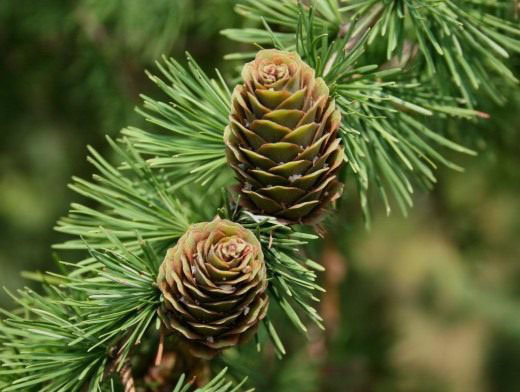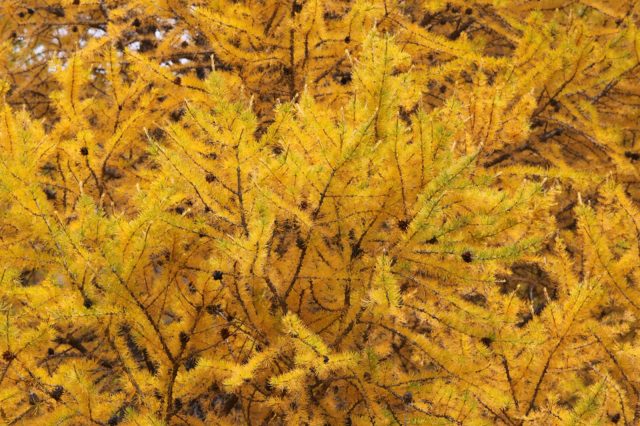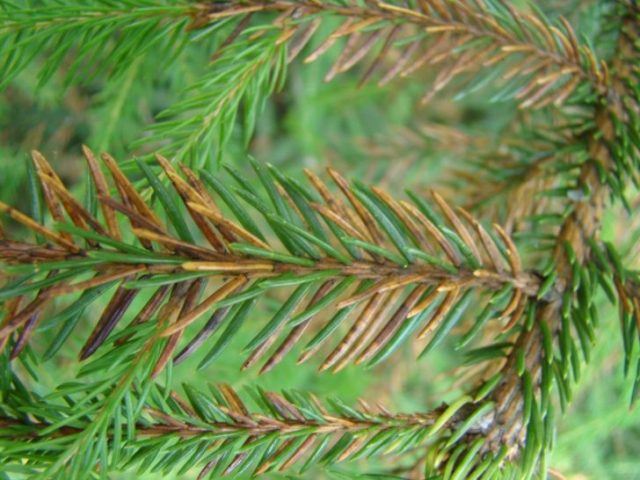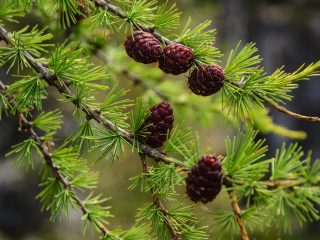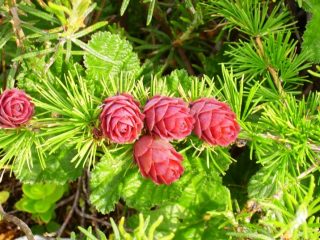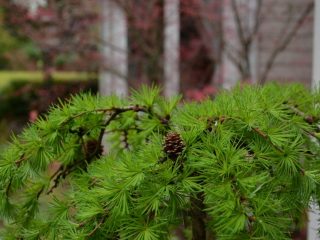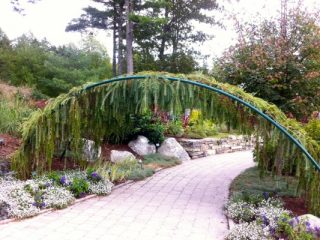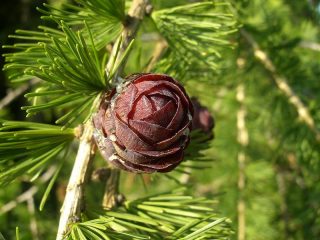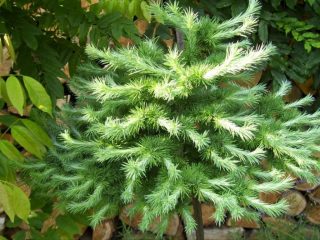Content
Unlike other representatives of evergreen conifers, larch trees turn yellow and shed their needles every autumn, as well as when certain unfavorable factors occur. This natural feature is very unusual and has several reasons and explanations.
Does the larch needles fall
Larch trees are durable and hardy trees. These plants are able to adapt to various natural factors and quickly cover new territories. The needles of the culture look like needle-like leaves of different lengths. They are soft, unlike spruce and pine needles, since they do not have a hard mechanical tissue inside. Like all deciduous plants, larch turns yellow every autumn and sheds its green dress, for which it got its name.
In the spring, it becomes covered with young bright green leaves, which over time change shade to dark: thus the needles become more like needles. Cones appear on the branches of the plant. Their size and number depend on the climatic conditions and the growing region. In autumn, larch turns yellow and falls off, covering the soil with a beautiful lemon-yellow carpet. Throughout the winter, the trees stand with bare branches.
In winter, buds reappear on the branches, similar to small spherical tubercles: in appearance they differ from the buds of other conifers. With the arrival of spring, shoots that are not similar from each other appear from them. The topmost bud produces a long stem with single needles. During blooming, a short bundle is formed from the lateral buds, uniting many small needles growing in different directions. The stem is not developed here, and the soft needles are tightly assembled at one point. There are several dozen needles in one bunch.
Why does larch shed its needles for the winter
It is assumed that larch was evergreen in ancient times. But, having fallen into the regions of the extreme north with a harsh climate, she was forced to turn yellow in order to adapt to new conditions in this way. Larch sheds needles for the winter in order to reduce water evaporation during the cold season. The tree goes into conditions of economy, because in winter the soil freezes through and through, and the roots of the plant are not able to extract a sufficient amount of moisture.
In addition, the needles themselves contain a certain amount of water, which helps them stay soft and fluffy. The surface of the needles, which protects the plant from moisture loss, has a very thin protective layer, which helps to adapt only to the warm season. Before the onset of cold weather, the larch turns yellow, the leaves fall from the tree to prevent it from freezing.
Causes of yellowing of needles in summer
Unlike deciduous trees, larch in very rare cases is exposed to pathogenic microorganisms due to the fact that it contains phenolic, tannins and resins. However, like any other plants, larch can still be exposed to various diseases and pests, as a result of which its needles can turn yellow even before the onset of autumn. In case of illness, putrefactive bacteria and fungi primarily attack the needles. Most often, larch is attacked by the following diseases and pests:
- Mushroom shute infects trees in May-June in conditions of high humidity. In this case, the larch turns yellow. The disease can be identified by the appearance of red-brown spots on the tips of coniferous leaves. Larch needles fall off.To protect the plants, from July to September, the crowns are sprayed with Bordeaux liquid or 2% colloidal sulfur.
- Melampsoridium fungus leads to the appearance of rust. The needles of the plant turn yellow and become stained. For prophylaxis, trees are sprayed with fungicidal agents. In addition, they try not to plant larch next to birch, which is an intermediary in the transfer of fungus.
- Aphid hermes - a kind of insects that suck juice from young needles. The needles turn yellow, dry up and fall off. Individuals of spruce-deciduous hermes form green growths on the shoots - galls, resembling velvet. The needles turn yellow at the site of aphid sucking, deform and curl. Shoots with such growths always die. In the fight against hermes, insecticides containing mineral oils will help. These substances are capable of dissolving the pest's protective wax shell.
To care for a tree, you must follow the basic rules:
- Larch needs to be watered and fed in a timely manner, broken, dried branches and falling needles must be removed so that parasitic insects do not start in it.
- Damage to the bark must be covered up.
- It is recommended to loosen the soil and mulch with hay, peat, sand, sawdust, manure.
Conclusion
Larches turn yellow at different times of the year for different reasons. These can be natural processes, as well as a consequence of the influence of unfavorable factors. Young seedlings retain green needles throughout the year. Adult larch trees shed their needles in winter in order to acquire a new green outfit in spring, which will delight with a spectacular view until autumn. If the crowns of plants turn yellow in summer, it means that the larch needs to be protected and treated with special agents from various pathogens.
